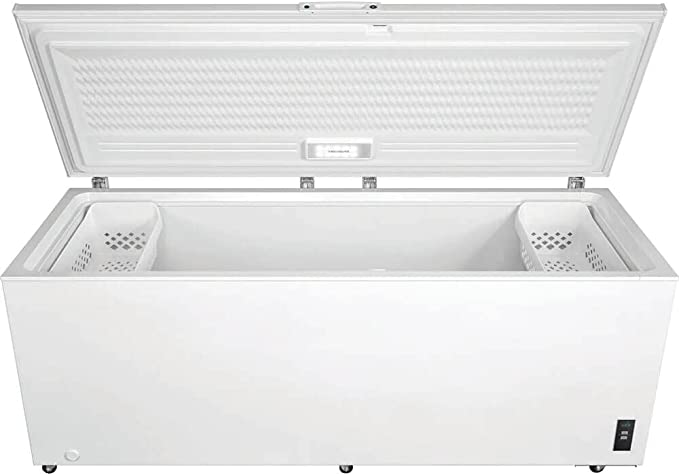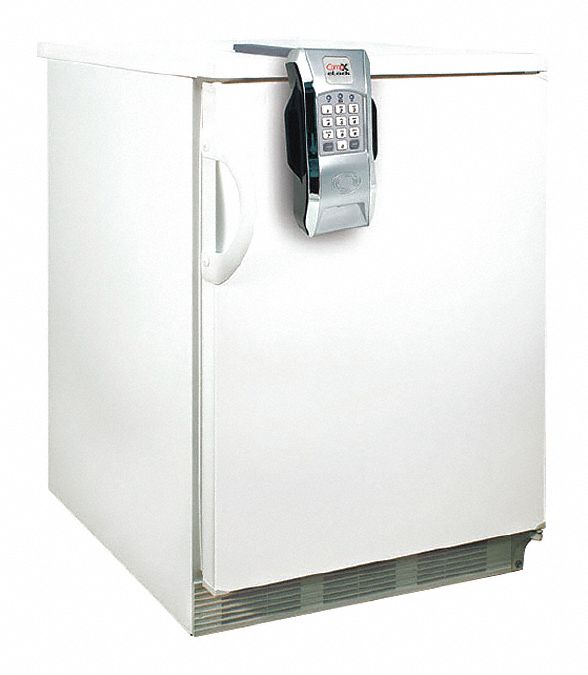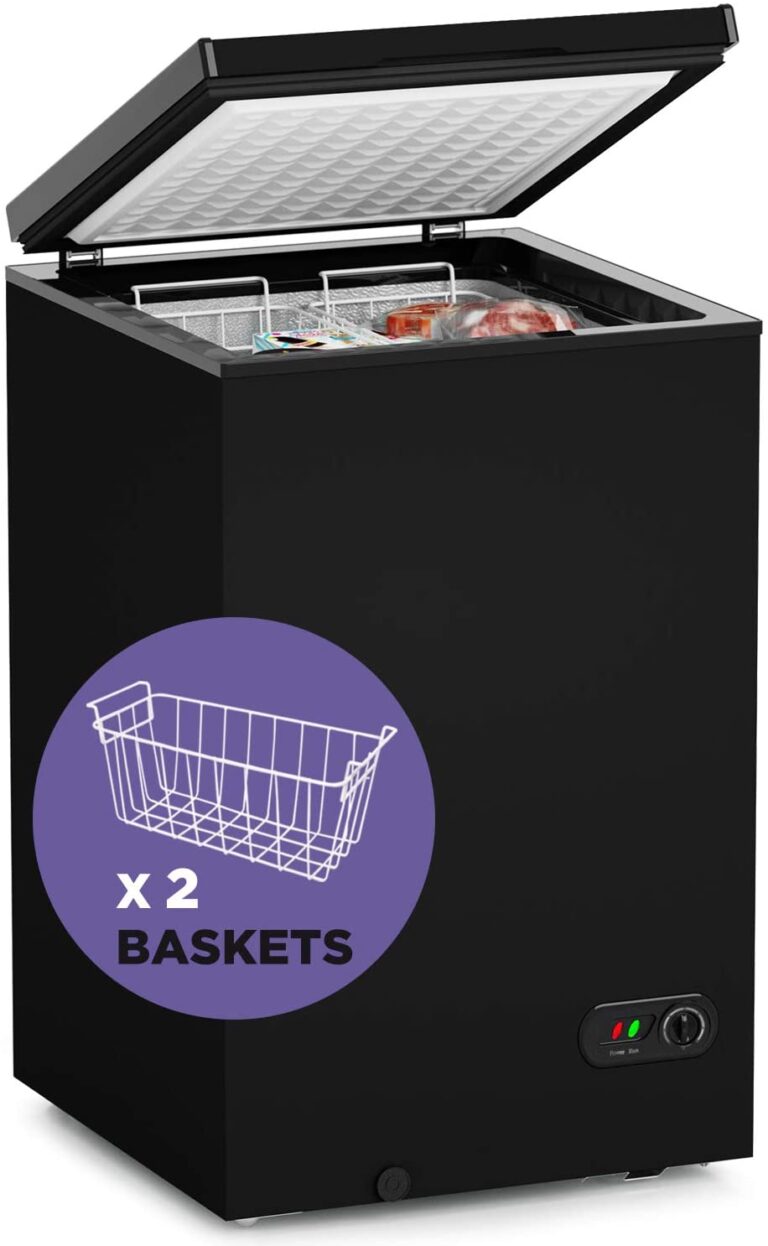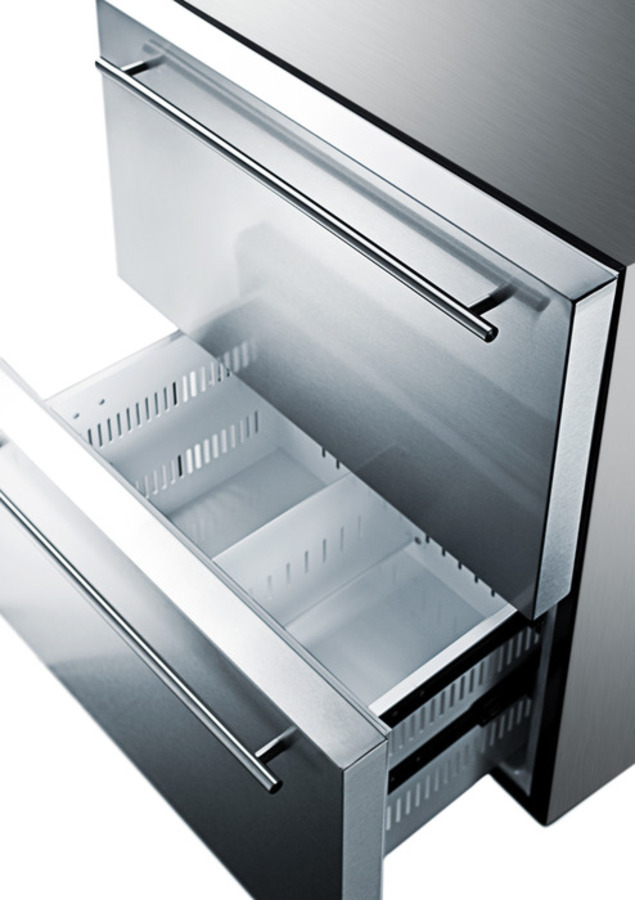How Much Power Chest Freezer Needs?
If you want to buy a chest freezer and save money on your energy bills, you have to understand the energy necessity.
We looked into the power consumption of chest freezers, so you can save a bit of your cash for current bills.
On average, chest freezers consume 400 watts. The ambient temperature, humidity, and the condition of the unit are all factors that affect the energy requirement.
An additional cost on your energy bill is about $53 a year or about $4 a month.
The size of the unit and your usage habits can affect the cost and energy consumption of the unit.
The higher the power usage costs will be, the bigger the chest freezer will be. We are going to explore the different power consumption based on these factors.
Table of Contents
Chest Freezer Power Usage And Costs
When it comes to power requirement and energy cost, freezer size is the most important variable.
The sizes of chest freezers are listed. Along with their capacity for reference, they are as follows.
- Compact – approximately 3 to 5 cubic feet
- Small – about 5 to 9 cubic feet
- Medium – between 10 to 16 cubic feet
- Large – usually 17 cubic feet and above
While running, small and compact freezers can use up to 100 watts of power. They use between 6 and 700 watts during the start-up stage.
The national average power consumption will cost between $26 and $63 annually or $2.16 monthly, although it varies per state and region.
For a medium-sized chest freezer, you will be using around 355 watts to power it, which will cost you about $53 a year or about $4 a month, depending on your usage habits.
Depending on the size of the chest freezer, it can consume up to 400 watts of electricity.
According to Energy Start, these units can use 980 kilowatt-hours per year, which equates to an average of 67 dollars per year in energy costs.
You get a little over $5 energy cost every month if you divide that by 12 months.
Electricity Costs Across The US
The electricity costs and power usage of a chest freezer and much other electricity-dependent equipment can vary by state due to factors, such as power plant transmission and distribution, power plant cost, fuels, local regulations, and the weather condition or season.
The average cost of electricity in the country is 13 cents per kilowatt hour. There are significant differences in the prices in each state.
The electric cost in California will be 90 per kWh in April of 2021.
According to the latest report from Electric Choice, the energy costs in Florida are $11. 37 in the same period.
Hawaii has the most expensive electricity at $32, followed by Alaska with $22, and Connecticut with $21.
It is important to research the chest freezer you buy to avoid higher energy bills.
When using appliances that do not run continuously but in cycles like chest freezers, you can monitor your power consumption and avoid costly energy costs.
If you want to know how much electricity a chest freezer uses in real-time, you can use the handy electricity usage monitor.
Plug the electrical cord of the freezer into the outlet and turn off the chest freezer first to install the electricity monitor.
The monitor should be plugged into the freezer outlet and the chest freezer should be connected to the outlet on the monitor.
Your chest freezer can now be monitored with an instant monitoring device.
How Much Power Does a Chest Freezer Use in the Beginning?
When you install the electricity usage monitor, you will see that the appliance eats up a lot of electricity during start-up.
It’s called starting or surge watt and it lasts for a few seconds.
The power needed to keep the freezer working continuously is around 2 to 3 times higher than the current needed to start a chest freezer.
A chest freezer that only requires 500 running watts but draws out 1500 surge watts upon start up can be a good example.
There’s not much to worry about when it comes to explosives surge watt.
It is a standard occurrence when starting up freezing equipment and other household appliances with a compressor.
Since chest freezers have complex compressor components, it takes more energy to keep them running.
Is It Possible That Defrosting a Freezer Saves Energy?
Surge and running watts are very important to your electricity bill. Learning more information and hacks can help you save money on your electricity bill.
Constant, periodic defrosting of the appliance can be an effective way to lower your freezer’s energy bill.
If you want to learn why and how defrosting your chest freezer can help in saving energy, you should check out our article on How Often To Defrost A Chest Freezer.
Ice build-up in the chest freezer can cause the machine to malfunction.
If not defrosted, the compressor in the chest freezer will work harder, drawing in more energy to keep the internal temperature of the appliance at the freezing level.
The good news is that some models of chest freezers already have an automatic system that can be activated when it’s necessary.
How Long Will a Chest Freezer Run per Day?
If it’s still new, a chest freezer from General Electric can run around 80 to 90 percent of the day. Fifty percent of the time, an old one is running.
It’s not a good idea to store your goods in a chest freezer that’s running 100 percent.
A continuously running freezer is a sign that the appliance is having problems with the compressor.
A chest freezer has a set on and off cycle that makes the compressor rest for 30 minutes.
When this cycle is irregular or the freezer doesn’t take its break time, it could be that there are defects or frost inside the freezer.
Most Energy-efficient Chest Freezers
If you compromise with low-quality, faulty chest freezers, you’ll end up with higher electricity bills in the long run.
There are three of the most top-tier and most energy-efficient chest freezers that we can choose from.
Midea MRC050S0AWW Chest Freezer
The Midea chest freezer is in the lower end in terms of size. You will have a hard time finding brands that are as energy efficient as it is.
It only takes a few hours after the event for the temperature to go up to 28 degrees. You only have to store a small amount of food for a family of 4.

Frigidaire 24.8 Cu. Ft. Chest Freezer
If you’re looking for a large chest freezer that can hold a lot of frozen goods for your family, then this is the one for you.
You can set the freezer compartment temperature to 15 degrees Fahrenheit to preserve meat, vegetables, and other items quickly with the easy-to-adjust temperature controls on this freezer.
It comes with a safety lock to keep the temperature inside the compartment at a certain temperature. There are plastic baskets for fast and easy organization of food in this freezer.

General Electric 10.6 Cubic Feet Chest Freezer
For more than 100 years, GE has been making home appliances. One of the most efficient chest freezers is available on the market.
One unit you can rely on to maintain the freshness of your food with low energy bills is their 10.6 square feet chest freezer.
The freezer only uses 218 kWh of energy, despite its size. It is ideal for the garage with a temperature range from 0 to 110 degrees Fahrenheit, which you can easily adjust using easy control.
The built-in, automatic warning system sounds off when the internal temperature fluctuates so you can quickly check if something inside the machine is faulty or if the cold is leaking out.
Conclusion
Compared to other home appliances, the chest freezers require more power to start and run. It’s usually the size that matters when discussing power consumption.
On average, it adds up to $53 on the yearly utility bills. If you wish, you can drag that price down even further.
Simply choose an energy-efficient chest freezer, use an electricity meter to measure energy use every day, and constantly defrost your freezer.

Foodie and a passionate cook, I am here to share all of what I know about cooking, kitchen, and food prepping.
Follow me for delicious and healthy recipes.







